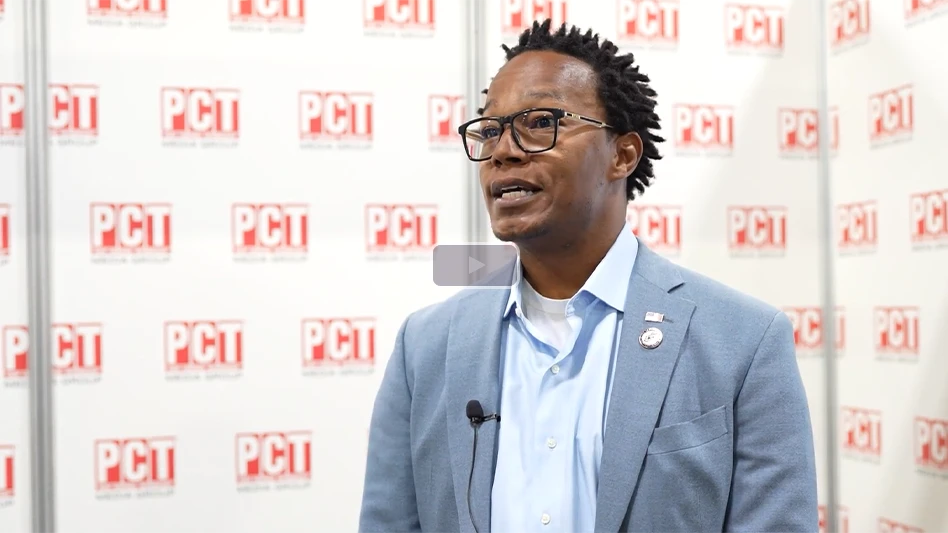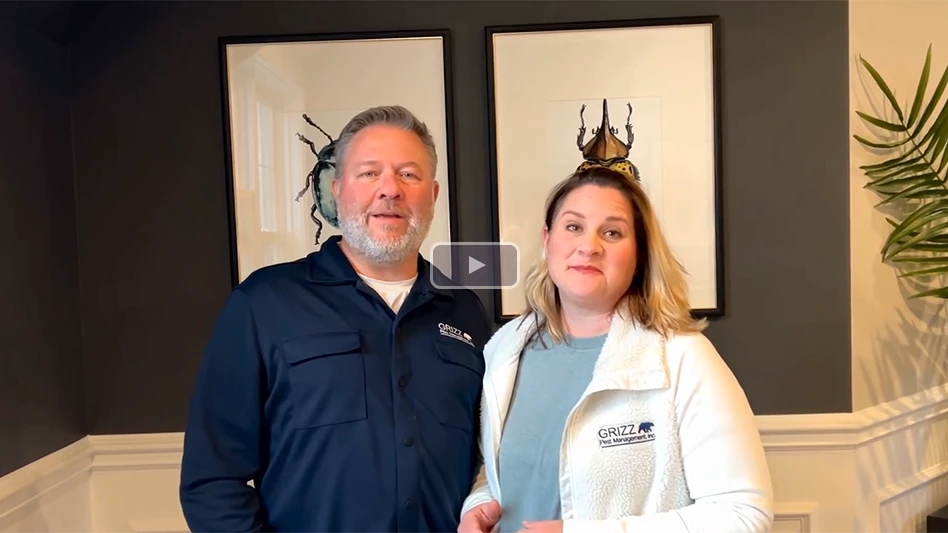In the past couple of years, Herb Field says more customers are phoning the Lloyd Pest Control call center to complain about fleas. The volume by no means indicates an epidemic or any type of real surge in flea pressure. But the calls are trickling in. And this is surprising after two decades of virtually no fleas in Field’s Southern California service area.
"Twenty years ago, fleas were our Number One pest call for general pest control services," says Field, COO of Lloyd Pest Control with locations in San Diego, Riverside and Orange County.
Byron Reid, product development, Bayer Environmental Science, remembers when fleas were a "cornerstone service offering" for pest management professionals. That was before the introduction of on-animal flea control products, which caused homeowners to rely on veterinarians rather than pest control companies to fight fleas.
Add to that an explosion in Argentine ants that virtually wiped out the flea population, according to Field. In came effective ant control products that managed the problem, and so fleas that are no longer "ant dinner" are slowly creeping back into the picture in California, as far as Field can see.
Because customers haven’t seen fleas in such a long time, Field thinks some grew lax about treating their pets. That translates to a few more phone calls today from homeowners who want to shoo fleas out of their homes. Lloyd Pest Control doesn’t blatantly promote flea control — it makes up a modest slice of the 20 percent of revenues generated from "other pests" that are not termites or ants, Field says.
But could flea control services represent a greater revenue opportunity for PCOs? Do these svelte, wingless pests deserve more attention?
"It’s hard for me to get my arms around how big of an opportunity it is," says Mike Burkett, national sales manager at MGK, a producer of flea control products. However, Burkett says he has seen pockets of flea activity in Texas. Additionally, moisture and humidity that many regions of the United States have experienced this year will trigger increased pest pressure across the board.
"I know there has been more talk about fleas," Burkett says. "And if a pest management professional were to say, ‘I’m going to offer this service and get the word out,’ they would probably get more calls to do flea work."
This isn’t exactly a testimony of increased demand for flea services, and there’s no real indication that flea pressure is greater this year than in the past. One major industry study, A Strategic Analysis of the U.S. Structural Pest Control Industry, published by Specialty Products Consultants, Mendham, N.J., shows the percentage of total annual GPC revenue from servicing accounts for fleas declined in 2009, from 6.5 percent in 2008 to 6.1 percent last year.
But that same survey reveals that fleas are responsible for more revenue than bed bugs. "That is variable based on geography," Bayer’s Reid says.
For now, flea control just may be a sleeper service — one that could provide motivated PCOs with an additional revenue source.
Catching a Wave. Reid has heard "apocryphal" stories about fleas from sales representatives who talk to customers, and from research professionals working in the field. The problem is, once Bayer decides to dig into the flea "problem," there’s no real concrete case there.
"We are continually probing this question of, ‘Where are the fleas?’" Reid says. "Are they really back? And unlike bed bugs that were easy to find, the flea thing is more fleeting."
Reid has heard that fleas are back in some regions. He knows they exist. And he believes PCOs are controlling them. But his organization comes up empty-handed when trying to identify a specific company that is entrenched in flea services or a university that is gung-ho about researching the pest.
"I’m convinced it’s real," Reid says of flea pressure. "But I don’t think it has spiked to the level where it is a consistent trend yet."
That’s why Reid calls fleas an apparition. "We know it’s out there, but we don’t quite know how big the [problem] is yet and what exactly is going on and where," he says.
Burkett pinpoints Texas as an area where fleas are re-emerging, and Field’s accounts of increased customer calls in California indicate activity there. In Florida, Barry Murray, national spokesperson for Truly Nolen in Fort Lauderdale, says the sandy loam soil and humid conditions provide an attractive environment for fleas.
"Fleas seem to come in waves," Murray says. "It’s a fluctuating thing where the environment and weather conditions make it right for higher incidences of fleas — we see that."
But equally important in any supposed re-emergence of fleas is customer behavior. Today, people are more educated about disease and are interested in taking measures to prevent it. "They are also far wiser when it comes to the exposure of their pets," Murray says. People are more in tune to how the environment affects the health and well-being of their families — and that includes Fido and Kitty.
For this reason, spot-on flea treatments for pets have taken off, but John Neberz, business manager for Central Life Sciences, says the tides are turning. "Over the last two to three years, we are seeing an upswing in the flea business based on cyclical reasoning," he says, backing Murray’s remark about waves of flea pressure.
Neberz says more homeowners are seeing a resurgence of fleas in the environment. Their animals are flea-free thanks to on-pet products like Frontline and Advantage. But fleas are still hanging around the house. "When they invade the home is when the problem really surfaces," he says.
Neberz says Central Life Sciences has new products in the pipeline to service the flea market. "The fact that we are putting development money into it is an indication that we are seeing real opportunities in the PCO flea control business," he says.
Flea management. While on-animal control products certainly keep fleas off house pets, they don’t address the exterior of the home where fleas breed, and the interior where they gravitate in cracks and crevices.
A comprehensive, interior-exterior approach is necessary to control fleas. "Fleas are an outside pest problem," Murray says, emphasizing why companies that just spray indoors for fleas are not really solving the problem. "Control must be conclusive, starting with searching out the source on the property to find out where fleas are nesting."
From there, foundation and barrier applications are applied. Caulking and sealing is addressed to prevent fleas from entering a home. "By then, there should be very little need for [control products] on the interior of the house," Murray says, emphasizing that this less-is-more approach is especially appealing to homeowners who want to minimize spraying in the home to protect pets.
To be sure, interior flea control has come a long way since "old school" treatments when a home’s carpet was sprayed down with pesticides and growth regulators, Murray says. "We’ve learned that you don’t need to be so aggressive to get effective control," he says.
Flea studies that Truly Nolan helped fund at the University of Florida 10 years ago reshaped the company’s approach to flea control to today’s more targeted approach. "We are looking for the least toxic alternative," Murray says.
Part of the control responsibility falls on the homeowner — there’s an education involved. Clods of dog hair in every corner are a welcome sign to fleas. Proper vacuuming and home cleanliness can prevent infestations. "Bedding and places where pets sleep or lie down have to be treated and the homeowner will have to launder those areas," Burkett says, adding that insect growth regulators come in handy.
As for service follow-up, Field says an effective treatment generally does not require a second visit. But an ambitious PCO might set up an initial treatment service with regular follow-up inspections to sell flea control as a repeat service, Burkett suggests.
Flea control is efficient for technicians because it doesn’t require extra manpower or technical skills compared to treating bed bugs, which is much more time-intensive and requires specialized training.
Promoting the Service. The flea is not the next bed bug. "Fleas certainly don’t have the all-encompassing media hoo-rah that bed bugs have, despite the fact that they rival each other in terms of PMP revenue on a national scale," Reid says.
The flea’s lower profile isn’t necessarily a bad thing. For companies that want to promote a general pest control service that strikes an emotional chord with customers — what dog-loving homeowner wants the family pooch to be exposed to fleas? — the service could represent a money-maker if marketed assertively.
Murray says partnerships with veterinarians can help sell the service. "The vet always knows what’s best for the pet," Murray says. "We don’t try to take on the veterinarian business, but we do work in conjunction with it to provide a conclusive flea control program for pets."
Murray’s advice: Help vets understand what products are used to control fleas so they recognize the value of the service. Suggest that on-animal flea control products be partnered with PCO flea treatment services, and leave behind brochures for vets’ customers to peruse.
"There are many veterinarians that recommend what we do because they are familiar with our procedures and processes," Murray says. "Vets know that companies like ours are using more advanced technology and not using treatments that will risk pesticide buildup in the pet."
Burkett emphasizes that pest control operators can’t just wait for the phone to ring with flea control requests. "They should take a more aggressive approach to talking about species affecting their area," he says.
If flea pressure is on the rise, talk it up. "PCOs need to go beyond waiting for something to happen and get the word out to the public and their potential customer base that there are other pests out there besides the ones like termites that are currently being talked about," Burkett says.
No one can create flea pressure. But pest control operators who identify an emergence of the tiny pests can market flea services and differentiate their companies from others with bland general pest control messages.
"Look for insects that aren’t as well-known as the bed bug if you want to think about building a good, additional service program," Burkett says. "I’d look at fleas, mosquitoes and ants even, and try to find ways to get more people calling you to do those specific treatments."
Hampshire is a freelance writer based in Bay Village, Ohio. She can be reached at khampshire@giemedia.com.

Explore the July 2010 Issue
Check out more from this issue and find your next story to read.
Latest from Pest Control Technology
- MGK Announces EPA Registration of Botanical Active Ingredient Veratrine
- Termite Control Sales Strategies
- NPMA Announces ELP Class of 2025
- Termite Control Tools and Equipment for PMPs
- Choe Reviews Drywood Termite Geographical Hotspots, Latest Research Findings
- Mosquito Squad Announces Rebranding to Mosquito Squad Plus
- Pest Control Equipment: If it’s Critical, Back it Up!
- In Memoriam: Marybeth Wonson





